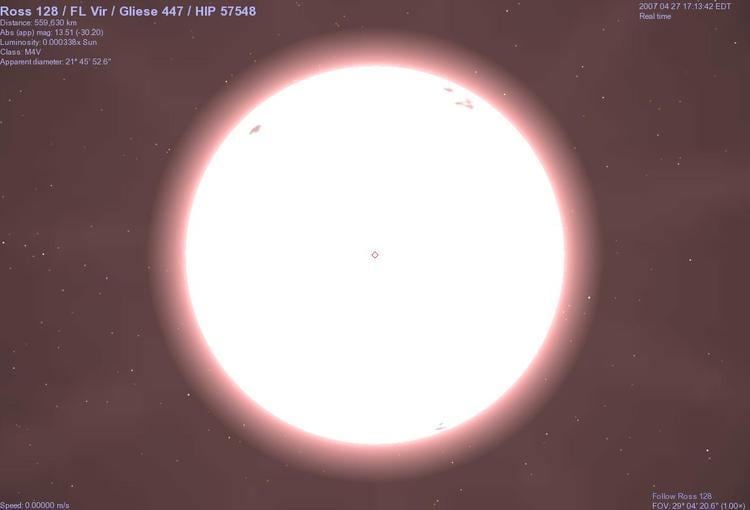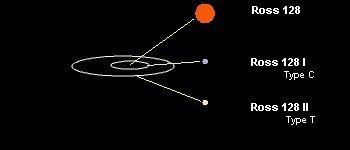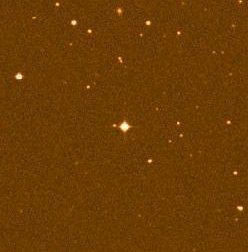Luminosity (bolometric) 0.0035 L☉ | Magnitude 11.13 Apparent magnitude (V) 11.13 | |
 | ||
Similar Ross 248, EZ Aquarii, Ross 154, Lacaille 9352, Lalande 21185 | ||
The return to ross 128 freespace 2 scp hd
Ross 128 is a small star in the equatorial zodiac constellation of Virgo, the virgin. The apparent magnitude of Ross 128 is 11.13, which is much too faint to be seen with the unaided eye. Based upon parallax measurements, the distance of this star from Earth is 10.89 light-years (3.34 parsecs), making it the twelfth closest star to the Solar System. It was first cataloged in 1926 by American astronomer Frank Elmore Ross.
Contents
- The return to ross 128 freespace 2 scp hd
- Retro remix gameplay freespace silent threat mission 7 the return to ross 128
- References

This low mass star has a stellar classification of M4 V, which places it among a category of stars known as red dwarfs. It has 15% of the mass of the Sun and 21% of the Sun's radius, but generates energy so slowly that it has only 0.036% of the Sun's visible luminosity. However, most of the energy being radiated by the star is in the infrared band, with the bolometric luminosity being equal to 0.35% of solar. This energy is being radiated from the star's outer atmosphere at an effective temperature of 3,180 K. This gives it the cool orange-red glow of an M-type star.

Ross 128 is an old disk star, which means it has a low abundance of elements other than hydrogen and helium, what astronomers term the star's metallicity, and it orbits near the plane of the Milky Way galaxy. It is classified as an active flare star since it can undergo unpredictable and dramatic increases in luminosity for a period of several minutes. Because of the low rate of flare activity, it is thought to be a magnetically evolved star. That is, there is some evidence that the magnetic braking of the star's stellar wind has lowered the frequency of flares, but not the net yield.

On multiple occasions this star has been examined for the existence of a low stellar mass or brown dwarf companion orbiting at a distance of at least one astronomical unit from the primary. However, no companions have yet been discovered. The star also lacks a strong excess of infrared radiation. An infrared excess is usually an indicator of a dust ring in orbit around the star.

Ross 128 is orbiting through the galaxy with an orbital eccentricity of 0.122, causing its distance from the Galactic Center to range between 26.8–34.2 kly (8.2–10.5 kpc). This orbit will bring the star closer to the Solar System in the future. The nearest approach will occur in about 71,000 years, when it will come within 6.233 ± 0.085 ly (1.911 ± 0.026 pc).

